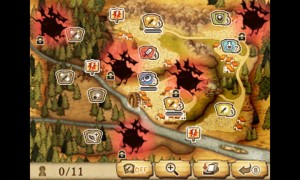Seminar Final Essay: Humane Design
Luis Gerardo Huiza Blanco
Thesis
Humane Design
Nowadays, it feels like the gaming industry only cares about how much money they can get. Games used to be, for the most part, great experiences that people could enjoy whenever they wanted to, but it doesn’t fell like that anymore. I understand that companies aren’t charities; they have their bottom lines to think about. But I don’t think the toxic practices they employ these days are beneficial for their customers, or even themselves for that matter. Practices like these, which hurt consumer trust, have the potential to send the entire industry in a crash course for failure. Luckily, the key to solve these problems is an important element of good design: Humane Design
Humane design is in essence, the idea of designing a product with the mindset that the user of this said product is a human being, and deserves being treated as such[1]. This means respecting the players needs outside of the game, rather that trying to force them to spend as much time as possible playing[2]. A concept like this shouldn’t be something too difficult to accomplish, after all it is an important part of good design to begin with. However, that is if you have the mindset that the purpose of your product is to entertain your audience. Sadly, that really can’t be said for a large amount of games produced today.
The mentality of the gaming industry today is a very narrow, short term one. Publishers and studios hate the idea of making just some money, as opposed to all of the money[3]. This type of thinking has huge ramifications that can be seen in the games themselves. Many games made this day and age could be considered simple Skinner’s box; products that give subliminal messages that reinforce ideas to the player[4]. This allows them to keep people playing their games long after they stopped enjoying the game. Using psychological techniques such as this, companies with no moral fiber exploit players, treating them like money producing machines rather than people[5].
Sadly, this type of behavior isn’t exclusive to how they distribute their product, but it also is a part of how they make it. Whenever it is big name titles or smaller releases, companies seek any way in which to get as much from the player has they can, be it money or time[6]. A few years back, publisher Electronic Arts released the free iOS title Dungeon Keeper, and it didn’t take more than a look to see how abusive the game was. In order to make a significant amount of progress at any time, players needed to spend large amounts of money in the game. The game wasn’t made in any way to give enjoyment to people, but to exploit them and take their money. This
became so evident, that an UK court declared advertising of the game misleading and demanding its removal[7]. It took until a year for the developer to even acknowledge the incident, and the showed no regret in their actions, stating, “They were too innovative”[8].
Fig. 1: This is an actual Skinner box, the mouse is punished or rewarded depending on his actions to specific stimulants. Is this how we should treat people?
Another example of this was in last year big title: Destiny. Made by the creators of Halo, people were excited to see a new game from such a beloved studio with a history of being involved with their fans, but things changed at the release of the game. While the game still had the brilliant combat systems that people expected from it, many parts of its design were questionable at best. The loot system was the biggest criminal in this case. A loot system, for the unfamiliar, is a system in which by doing activities in the game, players get new gear they can use as they please. However, this game’s system had been made to be completely random[9]. This meant that people could spend hours doing various activities in the game, and not be compensated for it. To put this into perspective, it would like working for hours at a job, which should pay a good amount, just to receive minimum wage. While eventually the system was fixed into something more fair, the fact that an experienced studio would make something like that accidentally is unlikely, since while systems like that have a level of randomness, there are parameters that make sure you get something worthwhile for your work. These two previous examples are just some of the main outliners in recent history, but this shows how the industry has no regard for their customers well being.
Fig. 2: The loot system was so bad in Destiny, that to get good gear the community of the game abused an exploit in the game dubbed “The Loot Cave”
However, that isn’t true of all games; there are games that show care for the player’s enjoyment. An example that comes to mind would be the game Bravely Default. The game features various examples of humane design, something that its genre, JRPGs, can struggle with. There are various mechanics in the game that ask you, the player, to close the system and leave it in sleep mode in order for them to work correctly. The game rewards the player for taking a break, something rarely done by any type of game, much less its contemporaries. The game also always provides the players with the ability to save at any time or save whenever something happens in them game, giving the player various opportunities in which they can take a break from the game.
Fig 3: The Rebuilding of Norende is a gameplay element that in order to be complete, asks you to stop playing the game and put it sleep mode.
The systems helped the game make it what it is, and it was so successful that the company responsible for the creation of the game announced in an interview that the games success changed their position regarding the profitability of the genre; and that it would be use as a template for future project of the company[10].
The need of humane design isn’t something that should need to be discussed. A successful industry is one that doesn’t only think of taking money out of their costumers, but one that treats them with respect. Not only is humane design something that would increase the quality of games, but also benefit companies with bigger profits. Regardless of the situation, we should always aim to treat others as actual people, instead of sources of revenue.
Annotated Bibliography
- Extra Credits. “Humane Design – Games Must Be Good to Their Players – Extra Credits.” Youtube video, 6:02. April 15, 2015. https://www.youtube.com/watch?v=GArkyxP8-n0.
- Karmali, Luke. “Square Enix to refocus on JRPGs after Bravely Default success.” IGN.com. Accessed August 5, 2015. http://www.ign.com/articles/2014/03/31/square-enix-to-refocus-on-jrpgs-after-bravely-default-success
- Sarkar, Samit. “Destiny patch looks to fix loot system so you won’t need a ‘loot cave’.” Polygon.com. Accessed August 5, 2015. http://www.polygon.com/2014/9/26/6852027/destiny-patch-loot-system-engrams-legendary-rare.
- Jordan Hedges. “User Experience Points – Humane Design.” Youtube video, 5:58. May 1, 2015. https://www.youtube.com/watch?v=TwUIjGdAFTs
- Yin-Poole, Wesley. “UK watchdog bans Dungeon Keeper ad, accuses EA of “misleading” customers.” Eurogamer.net. Accessed August 5, 2015. http://www.eurogamer.net/articles/2014-07-02-asa-bans-dungeon-keeper-ad-accuses-ea-of-misleading-customers
- Davis, Ian. “EA: Dungeon Keeper Failed by “Innovating Too Much”. The Escapist. Accessed August 5, 2015. http://www.escapistmagazine.com/news/view/136011-EA-Dungeon-Keeper-Failed-by-Innovating-Too-Much.
- Jim Sterling, “When Publishers Kick, Developers Start (The Jimquisition).” Youtube video, 9:08. May 18, 2015.
Fig 1: http://jackiewhiting.net/Psychology/LearnIntell/RatSkinBox.jpg
Fig 3: http://www.gamerguides.com/bravely-default/intro-and-gameplay-364/norende-reconstruction/
[1] Jordan Hedges. “User Experience Points – Humane Design.” Youtube video
[2] Idib
[3] Jim Sterling, “When Publishers Kick, Developers Start (The Jimquisition).” Youtube video
[4] Extra Credits. “Humane Design – Games Must Be Good to Their Players – Extra Credits.” Youtube video
[5] Idib
[6] Idib
[7] Yin-Poole, Wesley. “UK watchdog bans Dungeon Keeper ad, accuses EA of “misleading” customers.” Eurogamer.net.
[8] Davis, Ian. “EA: Dungeon Keeper Failed by “Innovating Too Much”. The Escapist.
[9] Sarkar, Samit. “Destiny patch looks to fix loot system so you won’t need a ‘loot cave’.” Polygon.com.
[10] Karmali, Luke. “Square Enix to refocus on JRPGs after Bravely Default success.” IGN.com.




